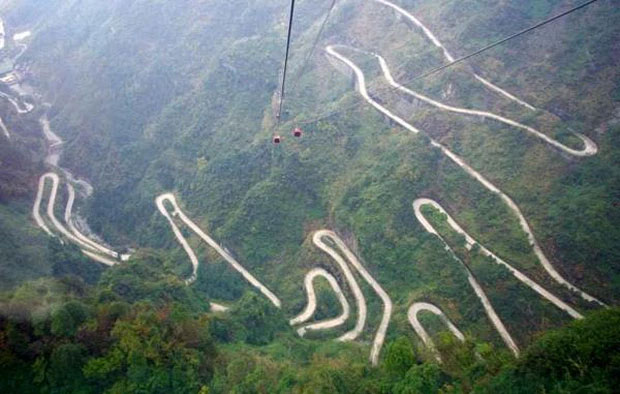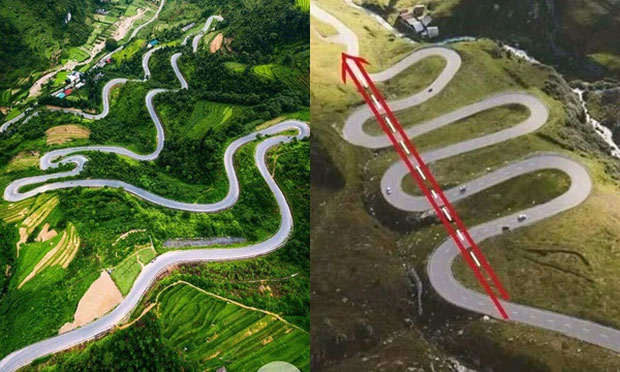The winding roads often have many sharp turns that obstruct visibility, posing dangers for drivers. So why are they still built this way?
If you have the chance to travel to mountainous regions, you will notice that the roads leading up the slopes are constructed in a winding fashion with many sharp turns. From a bird’s-eye view, it looks like this:

Roads to the mountains have always been winding like this.
In fact, there are famous winding mountain roads around the world known for their sharp turns. So why don’t they build straight roads up the slopes instead of these winding paths?
The simple answer: To protect the lives of travelers and facilitate easier movement uphill. A more detailed explanation lies in the realms of science and physics.
In simple terms, in scientific terms, if a driver has to drive straight uphill for an extended period, it can affect their vision, leading to distraction and increasing the risk of accidents. Curved roads stimulate drivers’ concentration.

Curved roads stimulate drivers’ concentration.
From a geographical perspective, mountains often have rugged terrains, so “flattening” a path from the base to the peak can be more challenging to design. In some cases, it might even be more expensive to build a straight road than a winding one.
From a physics standpoint, according to the principle of the inclined plane: a straight slope can be dangerous both uphill and downhill. Winding roads are designed to reduce the steepness, which helps control speed while descending and reduces the “drag” effect while ascending. This is especially critical when vehicles carry many passengers or heavy loads, as it increases the risk. When encountering obstacles, quick reactions may not be possible.

















































